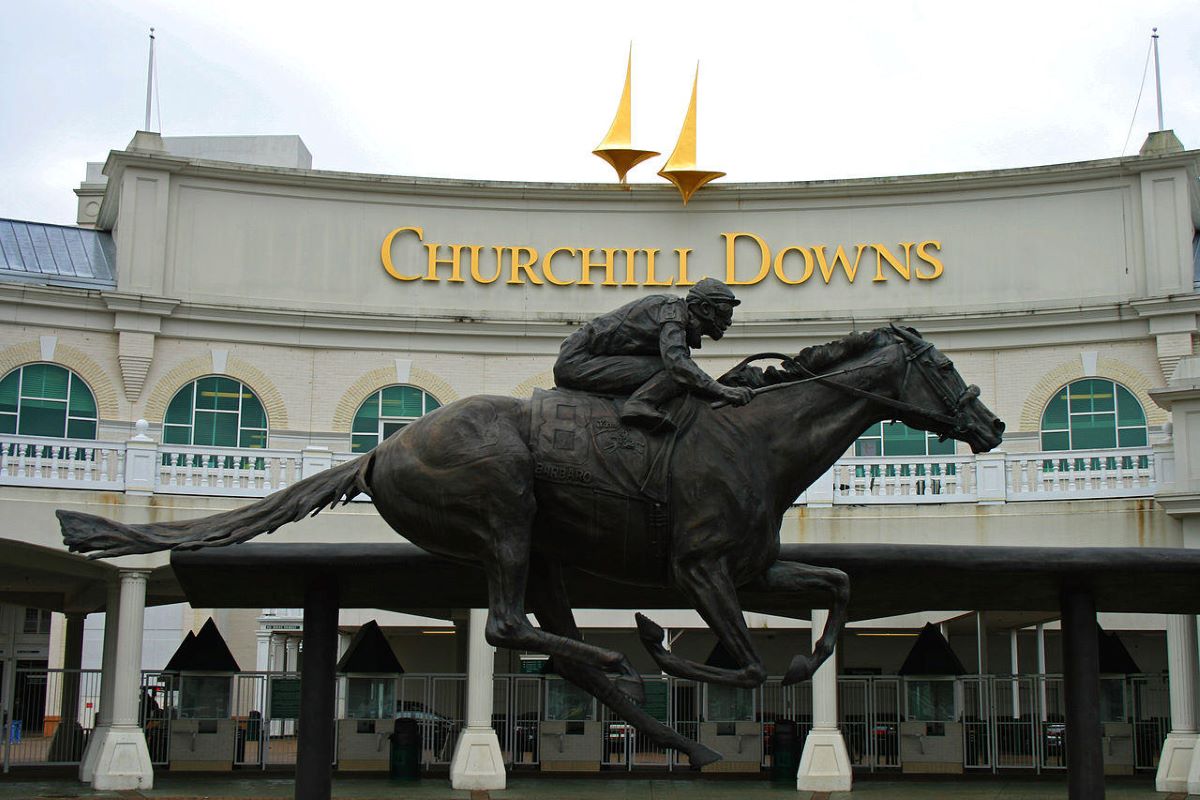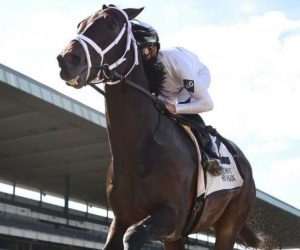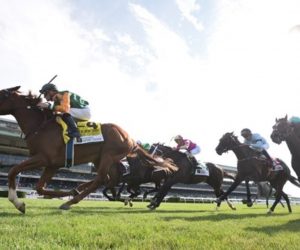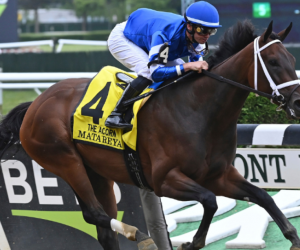For the first time since World War II, the Kentucky Derby will not run the first Saturday in May. Instead, due to the COVID-19 pandemic, it will run the first Saturday in September.

Churchill Downs officials made the announcement Tuesday morning in response to a directive from the Centers for Disease Control that calls for no gatherings of more than 50 people for the next eight weeks. The Derby, which routinely draws crowds upwards of 160,000, was scheduled for May 2.
Instead, the event will run Sept. 5, with the Kentucky Oaks, the flagship race for 3-year-old fillies, running Sept. 4.
Churchill Downs Inc. CEO Bill Carstanjen said in a Tuesday morning teleconference that his team chose the Sept. 5 date “based on the limited number of other sports running that weekend,†along with local hotel availability and arrangements with broadcast partner NBC.
College Football Enters the Picture
In NBC’s case, contractual obligations to air Notre Dame football during the fall came into play. The Fighting Irish have two bye weeks (Sept. 5 and Oct. 24) and two road games not airing (Sept. 26 and Oct. 17). Throw in the Nov. 6-7 Breeders’ Cup at nearby Keeneland, and the Sept. 5 date made the most sense.
“Certainly things can change over time, but this was a very thoughtful, carefully considered plan that we’re implementing and we feel really good about it and really confident about it,†Carstanjen said. “We also feel confident that we are going to run the Kentucky Derby, and we are going to run it with a crowd.”
Running the Derby without fans present was an option, as some tracks began holding races in recent weeks without any audience present.
“The Kentucky Derby is a participatory event,” Carstanjen said. “Its energy and its magic really comes from everyone participating and being there to enjoy it.â€
The rest of the Derby Week races at Churchill Downs are still undetermined. Churchill Downs currently controls three sets of 2020 racing dates in Kentucky: April 25-June 27, Sept. 16-27, and Oct. 28-Nov. 29. The Kentucky Horse Racing Commission can make additional dates available. While those would likely conflict with other tracks, most notably neighboring Keeneland in Lexington, Churchill Downs’ influence in the state would likely smooth over any conflicts.
As for Keeneland, that track canceled its spring meet earlier this week. Earlier, it canceled its Two-Year-Olds In Training and Horses of Racing Age Sale.
Summer Stakes to Award Qualifying Points
Meanwhile, Churchill Downs officials said they would take the existing summertime stakes races for 3-year-olds and incorporate them into their qualifying points system. That’s likely to boost the profile of such summer races as the Haskell at Monmouth Park, the Travers and Jim Dandy at Saratoga, and the Affirmed at Santa Anita.
“We will take existing stake races around the country and incorporate them into our points system,” Carstanjen told the Louisville Courier-Journal. “We will work with other prominent partner tracks that operate throughout the summer and determine the various paths to the starting gate at the derby that enable the horses in the best form to compete.â€
Carstanjen said points currently earned in Derby qualifying races will count. As of now, Bob Baffert’s Authentic leads the point standings with 60.
Remaining Triple Crown Legs TBD
As for the other two legs of the Triple Crown, the Preakness Stakes and the Belmont Stakes, Carstanjen said talks are already underway to place those races in their traditional timeline following the Derby. That would equate to a Sept. 19 Preakness and an Oct. 10 Belmont. Traditionally, the Preakness runs two weeks after the Derby and the Belmont three weeks after the Preakness.
Both the Maryland Jockey Club and the New York Racing Association issued statements blandly confirming their desires to make announcements when more details are known.
The last time the Kentucky Derby didn’t run the first Saturday in May was 1945. That year, a federal ban on horse racing went into effect in January and was to last for the duration of World War II. Government officials lifted the ban on May 9, the day after V-E Day, and the 1945 Derby took place on June 9.
You’d have to go back to 1901 to find the only other year the Derby didn’t occur in May. That year, the gates opened on April 29.
The Kentucky Derby has never been canceled since its first running 145 years ago in 1875.











